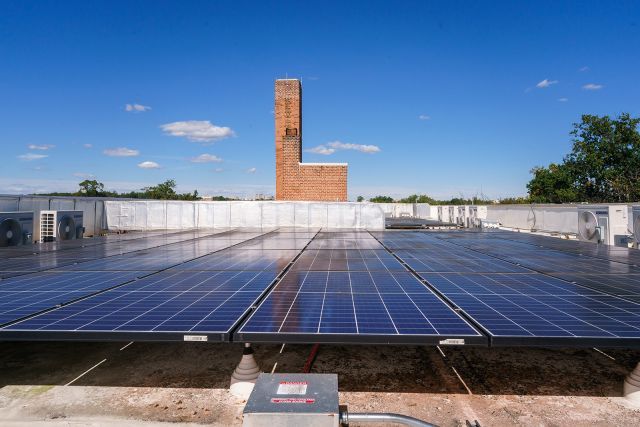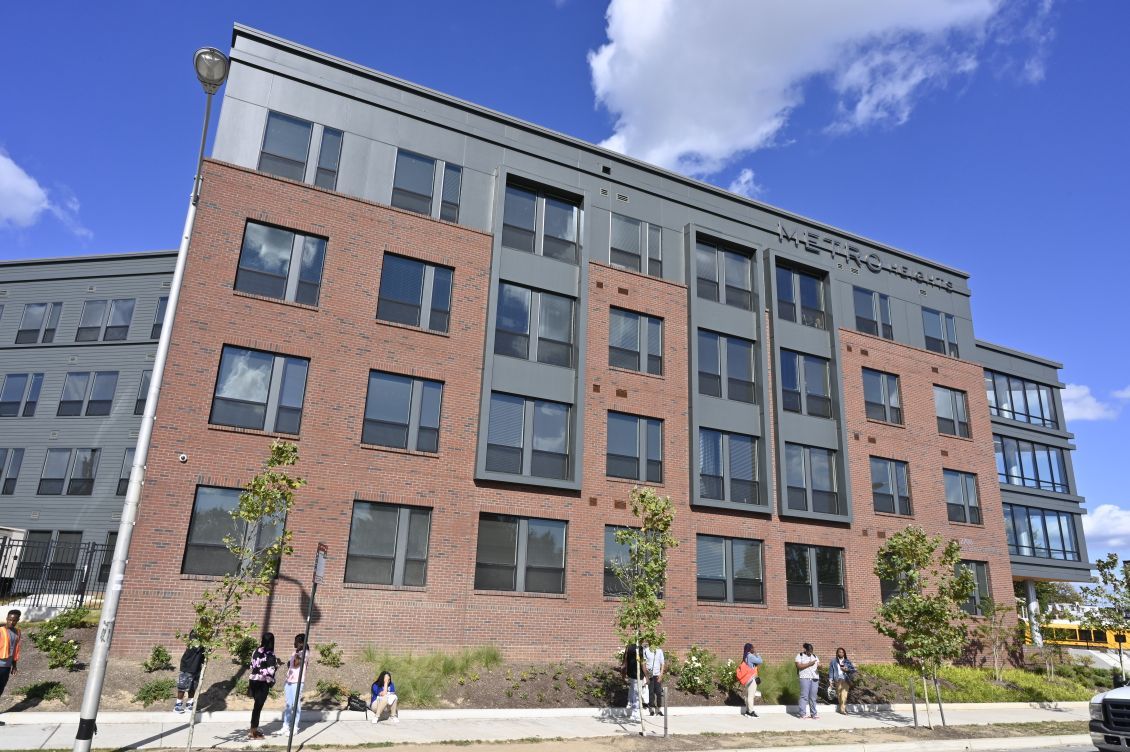Has there ever been a more important moment for affordable housing owners and operators to understand how their buildings perform? Among other benefits, utility benchmarking allows owners to qualify for funding and tax credits available through the Inflation Reduction Act (IRA). It also positions housers to demonstrate alignment with regional climate goals and requirements such as building energy performance standards (BEPS).
Benchmarking entails tracking, analyzing, and reporting consumption and costs associated with energy usage, and sometimes water and waste, in a property or portfolio of buildings. The process also helps owners identify outlier performers, prioritize renovation projects, and quantify efficiency improvements.
Buildings in the United States account for over one-third of greenhouse gas emissions and $370 billion in annual energy costs. As municipalities across the country aim to fight the climate crisis by setting goals reducing greenhouse gas emissions and energy consumption, they’re increasingly enacting utility benchmarking and reporting requirements. Why? Because progress must be measurable – and meaningfully measuring progress in buildings starts with benchmarking.
Four Benefits of Benchmarking
1. Refine Retrofit Planning and Goal Setting
Benchmarking allows owners to take a data-driven approach to retrofit planning and emissions goals using benchmarked figures and building performance data over time. Owners can prioritize retrofits based on the specific needs of their buildings and target their energy audits, saving time and costs and ensuring improvements are allocated where needed.
In 2015, the National Resources Defense Council’s Center for Market Innovation helped three New York property owners benchmark their multifamily buildings and conduct energy audits. Owners were able to plan retrofits that would reduce energy use by 21% to 29% and decrease annual energy costs by $80,000 to $515,000.
2. Access Green Mortgage Programs, Preferential Pricing, and More
Freddie Mac’s Green Up and Green Up Plus loans require borrowers to submit benchmarking metrics and engage in third-party data collection before loan origination. Fannie Mae offers a suite of green financing programs, whose borrowers are required to conduct utility benchmarking and report their properties’ annual energy performance metrics.
The Federal Housing Administration’s Green Mortgage Insurance Premium (MIP) offers a reduced MIP of 25 basis points (0.25%) for properties that achieve and maintain an ENERGY STAR score of 75 or higher. The Better Buildings Challenge, hosted by HUD, is a voluntary commitment to energy and/or water efficiency for owners of multifamily housing that offers financing and benchmarking technical assistance, and requires utility benchmarking to participate.
3. Qualify for IRA Programs
Awardees of HUD’s Green and Resilient Retrofit Program (GRRP) must complete post-rehab utility benchmarking. The GRRP program has closed, but The Benchmarking Initiative still offers no-cost benchmarking assistance not only to GRRP awardees, but any eligible HUD-assisted properties. HUD also offers a free Multifamily Benchmarking Toolkit available to all. In addition, benchmarking will be a requirement for some, if not most, funding opportunities through the Greenhouse Gas Reduction Fund. Program details remain forthcoming.
4. Meet the Enterprise Green Communities Standard
Thirty-two state Qualified Allocation Plans (QAPs) currently require or incentivize Enterprise Green Communities for projects seeking Low-Income Housing Tax Credit financing. Green Communities, the nation’s only green building certification created with and for affordable housers, requires benchmarking and energy and water data reporting for five years (Criterion 8.5). In alignment with HUD’s Multifamily Benchmarking Toolkit, Green Communities offers four methods of compliance and flexibility in choosing a benchmarking platform.
Benchmarking in Action
Enterprise Community Development, Enterprise’s community development division, is the largest nonprofit owner and developer of affordable housing in the Mid-Atlantic region and the sixth largest nonprofit affordable housing owner in the United States, serving over 24,000 residents. In 2023, we stepped up to the DOE’s Better Climate Challenge, pledging to reduce portfolio-wide greenhouse gas emissions by more than 50% within 10 years. We also agreed to work with DOE and partners to share solutions and decarbonization strategies.

To meet and exceed holistic, portfolio-wide emissions goals, Enterprise partnered with MD Energy Advisors, successfully benchmarking more than 50 properties in ENERGY STAR Portfolio Manager, the EPA’s no-cost resource management tool to track energy, water, waste, and greenhouse gas emissions.
Prior to the Better Climate Challenge, Enterprise’s benchmarking efforts have ensured compliance with Maryland’s and Washington, D.C.’s Building Energy Performance Standards (BEPS), initiatives to transition buildings to net zero direct emissions, which require benchmarking and energy reporting.
Benchmarking has positioned Enterprise to be ahead of the curve when it comes to energy retrofits and other climate change goals, according to Galgallo Golompo, clean energy development associate at Enterprise Community Development.
“Benchmarking has helped us better analyze our energy use, plan energy reduction measures, and advance our goal of developing resilient housing for low- to moderate-income communities,” said Golompo.
With a significant portion of its portfolio benchmarked, the team will continue its decarbonization efforts, including launching the third phase of Enterprise’s community solar program in Maryland. The program aims to install solar photovoltaic panels across its 114 properties with a goal of creating nearly 50 MW of solar-generating capacity over the next seven to 10 years.
Benjamin Cho is an intern with Enterprise’s Green Communities team. This blog is the first of two articles on the benefits of energy benchmarking, tracking, and reporting. Part two will focus on navigating state and local building energy performance standards (BEPS).
